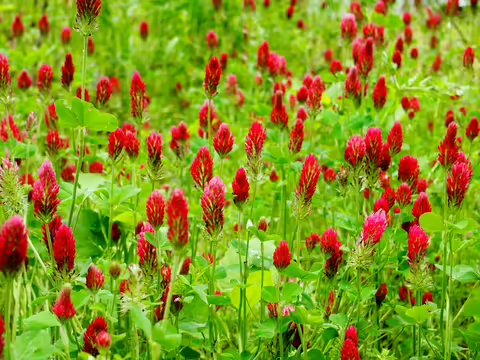URBANA, Ill. – Healthy soil is essential for healthy plants. Using cover crops in the home garden is one way to promote soil health.
Cover crops are non-harvested crops that add organic matter to the soil, transfer nitrogen to plants, and break up heavy clay or compacted soil. They are commonly used in agriculture, but also have a place in the home garden.
Cover crops are planted before a garden is planted or after harvest. Cover crops can also be planted in areas that are unused for the season.
University of Illinois Extension Horticulture Educator Nicole Flowers-Kimmerle says using cover crops in the home garden has many benefits.
“Improving soil structure, drawing nutrients up from deep in the soil, and increasing soil fertility are just a few ways cover crops to improve soil health,” Flowers-Kimmerle says. “Suppression of weeds, habitat for beneficial insects, increased biodiversity are other ways cover crops work for the garden's good.”
There are two types of cover crops to consider, warm-season and cool-season. Warm-season cover crops are planted in spring or summer before the garden is planted or in a fallow area. Buckwheat, cowpeas, and crimson clover are warm-season are common cover crops used in the home garden.
Cool-season cover crops are planted in late summer or early fall after the vegetables are harvested. Oats, winter wheat, winter rye, and crimson clover can be used as cool-season cover crops.
“Keep in mind that these cool-season cover crops need to germinate and grow before winter temperatures,” Flowers-Kimmerle says.
Crimson clover and cowpeas are legumes that take nitrogen from the air and convert it to a form usable by plants. Notice that crimson clover can be used as either a warm-season or cool-season cover crop.
When planting a cover crop, there is no need to cover the seeds. Allow the plants to grow until the flowering stage. Once flowering begins, either mow or cut down as close to the ground as possible to prevent seed formation. If the crop is cut down too early, it may regrow. If it is cut down too late, it may reseed.
After cutting down the cover crop, leave the cut portion as a mulch on top of the soil or till it into the ground. Both options have their benefits. Leaving the plant material as a mulch can suppress weeds. Tilling can help incorporate the organic matter into the soil, but it also disrupts the delicate soil ecosystem.
“Each garden is unique, so you must decide what is suitable for each situation,” Flowers-Kimmerle says.
Winter hardy cover crops or crops not killed by the mowing could be tilled into the soil. A cover crop that is killed by winter temperatures would not require tilling the debris into the soil.
It is important to follow the “mow, wait, plant” rule when using cover crops. After mowing a cover crop, leave the plant debris to sit for two to four weeks before planting anything else. The residue needs to break down and the flush of microbial activity needs to slow before new plants start growing.
SOURCE: Nicole Flowers-Kimmerle, Horticulture Educator, University of Illinois Extension
ABOUT EXTENSION: Illinois Extension, the public outreach, and engagement arm of the Universityof Illinois, translates research-based knowledge into actionable insights and strategies that enable Illinois businesses, families, and community leaders to solve problems, adapt to changes and opportunities, make informed decisions, and carry technical advancements forward into practice.
PHOTO ACCESS: The photo in this article is available to download for media use.
